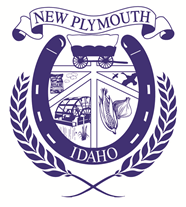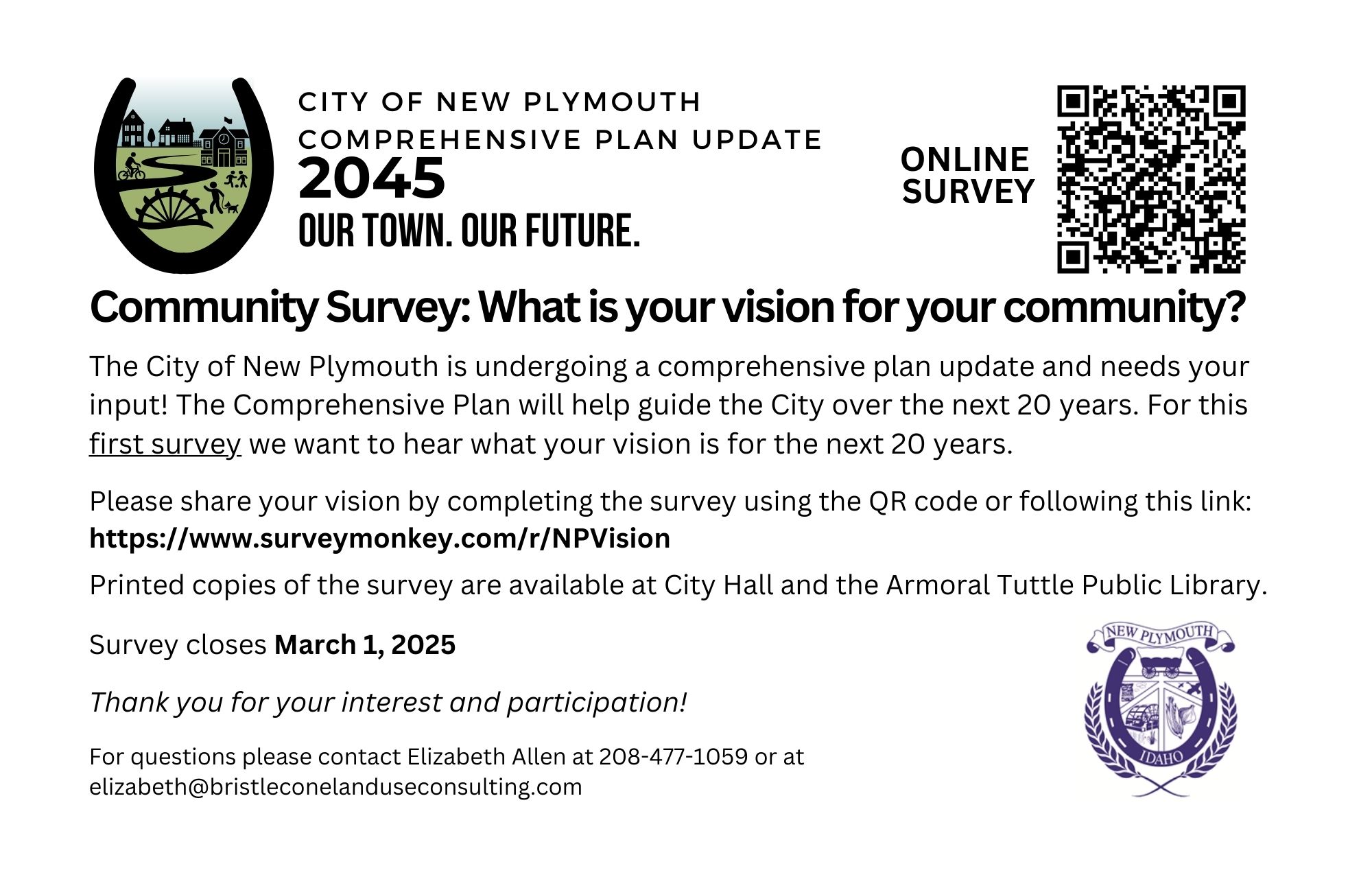Comprehensive Plan

Draft Comp Plan 10/2025
The City of New Plymouth is updating our Comprehensive Plan and we encourage our community members to weigh in on what matters most to them. Click the image below to complete the online survey or download the .pdf in the documents below.
Professional planning involves a great amount of teamwork. Through this collaborative process, planners help to define the community's vision for itself. Working with local residents, politicians, and other community organizations, planners help establish the vision for communities. This vision is created not only from what the community members want, but based on an understanding of the problems and resources at hand.
Comprehensive planning helps the community look at the options it has for development and change. Through the planning process, the physical, social and economic aspects of communities are examined and the connections between them. Professionally trained planners analyze the existing conditions and future trends in the area. They analyze issues such as transportation, land use, housing, recreation and open space, natural and cultural resources, community services, population, and economic development. In addition to generating their own data, planners draw upon the work of others to create a comprehensive overview of the community. Once the analysis has been completed, they develop strategic alternatives for solving problems in a coordinated and comprehensive manner. These alternatives make up a Comprehensive Plan that will guide future development based on the established goals and the systematic analysis.
The Comprehensive Plan consists of these alternatives presented in a formal document. Plans can take several shapes, from comprehensive plans to historic preservation plans. Plans are presented to community officials, who review, revise and adopt them for action. Plans are required at different levels of government. Once the plan is adopted, the primary job becomes the implementation of the plan, coordinating work among many groups. The tools of planning implementation include such things as land use controls and economic development strategies.


